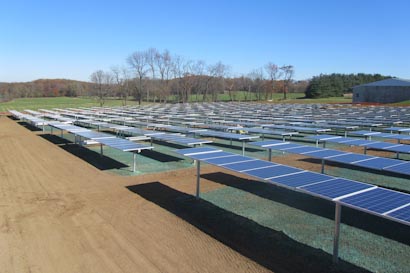What is No-Mow?
A Drought Tolerant, Low Resource Input, Eco-Friendly Lawn.
- Reduces mowing to once or twice a year
- Once established, No Mow requires little, if any, watering
- Fertilizers are not needed, or recommended
- Established turf chokes out weed growth
- Forms a thick flowing turf that withstands moderate foot traffic
- Thrives in full sun or partial shade
- Grows in any well-drained soil
Low maintenance No Mow Lawn seed mix is a specially designed blend of fescue grasses that grow to form a dense sod and thrive in full sun or partial shade. An established No Mow lawn requires little if any watering or fertilizing, and minimizes weed growth through its interlocking root system. No-Mow turf can be mowed once or twice a year, or not at all!
Site Preparation -- Prior to seeding “No Mow,’ all the existing vegetation must be completely eliminated. If renovating or converting an existing lawn, the grasses and weeds on the site must be killed or removed before planting.
Seeding Dates -- The optimal window for seeding “No Mow” is between August and September. Cool season grasses germinate well during the cooler weather of late summer and early fall, while most weeds germinate in spring and early summer. By the following spring the fescue grasses are in control, and leave little room for the germination of weed seeds in the soil. Cool season lawns that are seeded in fall experiences markedly less weed competition than spring seedings, mature faster, and should form a sod by the end of the following spring.
Seeding Methods -- “No Mow” can be seeded by various equipment, including: • Hand seeding (for small areas only) • Push-type grass and fertilizer spreader • Over the shoulder hand-cranked whirlybird type seeder • Turf slit-seeder • Tractor mounted broadcast seeder, such as a “Brillion” seeder • Tractor mounted slit seeder • Hydro-seeder
Fertilization is generally not needed to support growth of a healthy “No Mow” turf, except in extreme cases where soil nutrition is notably lacking.
Once the “No Mow” lawn is established, there are four basic mowing options: • No mowing at all • One late spring mowing, usually in early June when the seedheads appear • Fall mowing with a mulching mower, especially in wooded areas to chop up fallen leaves • Regular mowing, usually monthly, to maintain a more “cropped” appearance


